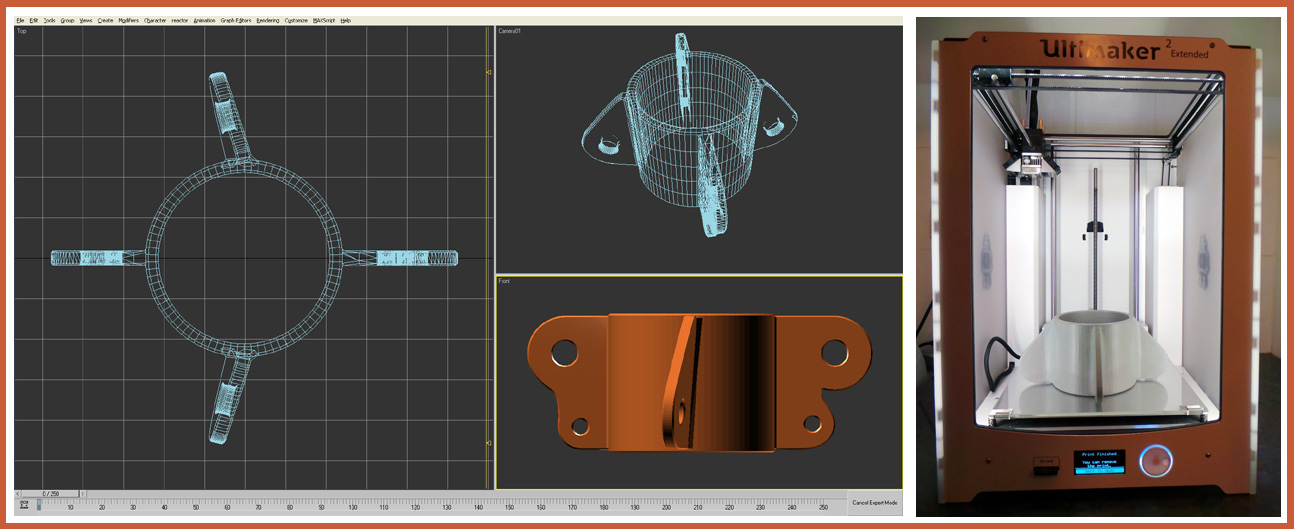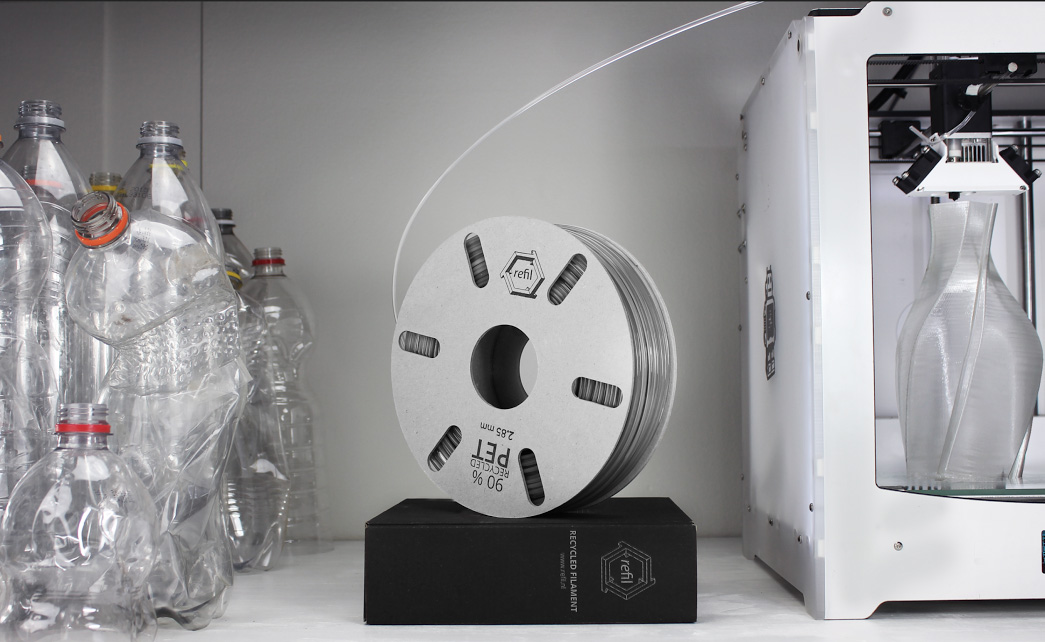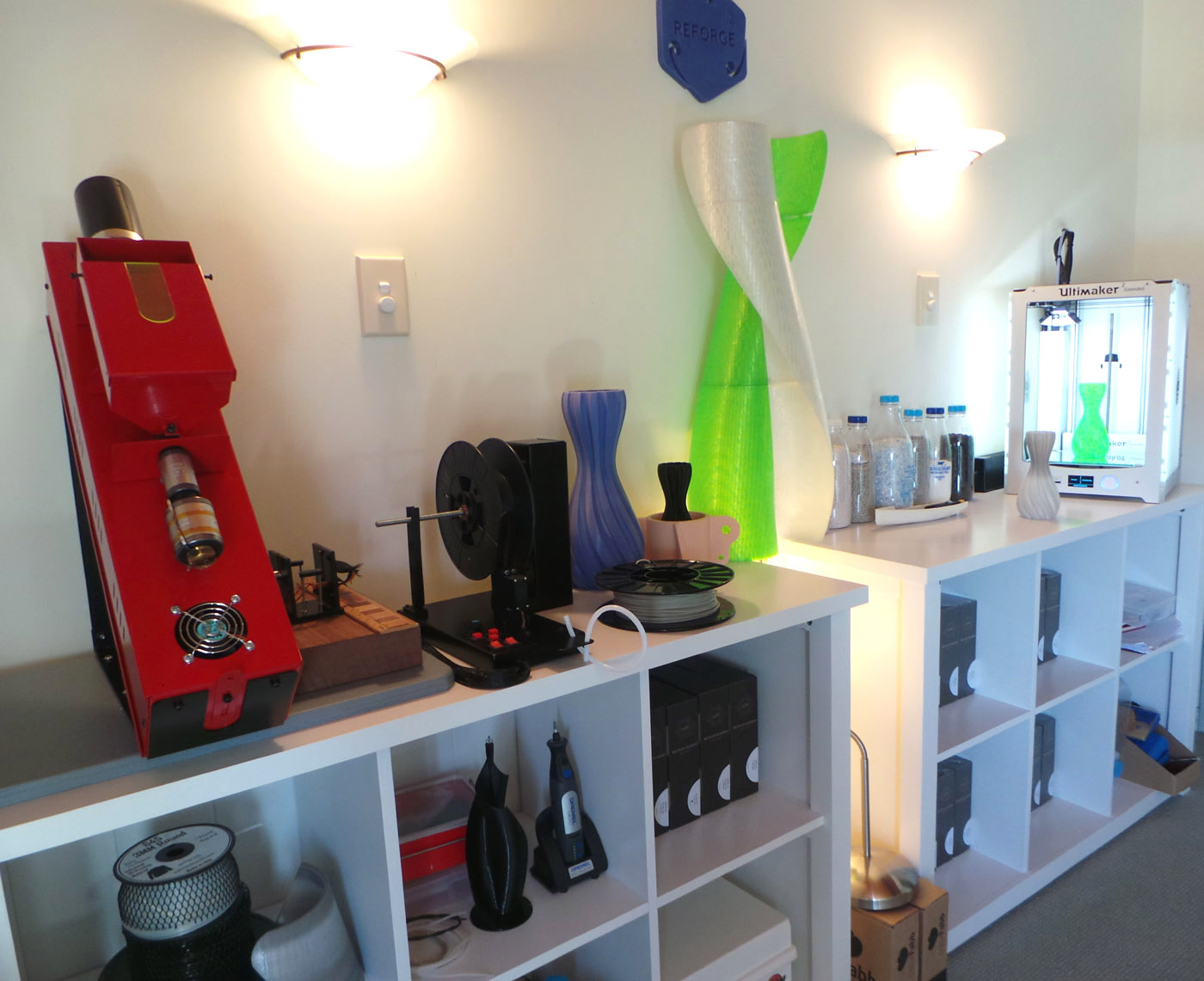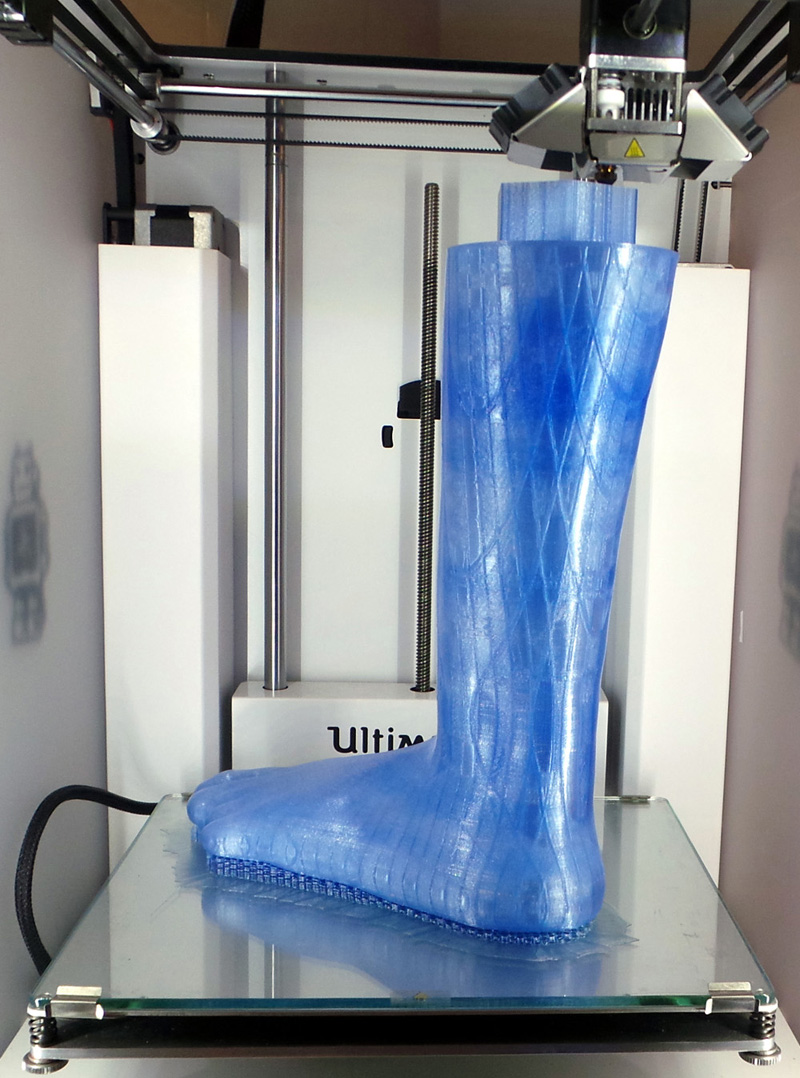It may surprise many kiwis to know that the drinking bottle on their desk will not be recycled in New Zealand. About a third will end up in landfill and the rest will be shipped to China and Australia. Some of it will be burned and some melted down then shipped back to NZ as products in an ever wasteful, energy intensive cycle. What if we could up-cycle the bottles here in NZ directly into useful products?
Our company, REFORGE, is working to do exactly that by locally upcycling plastic bottles through 3D printing. The goal is to combine environmentalism with disruptive manufacturing technology to help solve social, environmental and economic problems. It is a project full of challenges and potential. As a technologist and an environmentalist it is exciting to be involved.
A Personal Journey
Developing REFORGE has been a journey influenced by three experiences in my life. The first was working as a professional pilot in the US. When you fly for a living you get to see much of what the public cannot, and flying over the endless expanse of US oil refineries taught me just how much power we were consuming. The next experience was virtually the opposite. Spending a year sailing through the Caribbean Islands with an adventurous kiwi named Mary, we learned how little energy you need to thrive. And finally, a long career involved in the advancement of 3D software taught me the power of technology to solve problems.
After a few decades working with 3D tools, Mary suggested I use these skills to design a 12 metre yacht and have it professionally built. It was not hard to say yes and as the project progressed we found that 3D printing was becoming an invaluable tool. We used it to study hull shapes and it proved superb for prototyping components like the complex mast bands that held the rigging together. We printed these shapes into recycled plastic moulds that were then cast in bronze. With all this experience in design, composite fabrication and 3D printing, I was looking for a way to combine my interests in 3D with environmentalism. After months of research looking at overseas efforts, the decision was made to create REFORGE.

Back to Your Drink Bottle
Your drinking bottle is made from PET (Polyethylene Terephthalate), a plastic that is quickly proving itself as a superior 3D printing material. Today, 3D printing is moving beyond prototyping and towards manufacturing, and waste bottles offer a superb feedstock to 3D print almost anything. Kiwis understand that one key to reducing waste is finding value but, sadly, we only get around $300 – $500 per ton by shipping waste bottles overseas. However, the same material processed into a high quality PETg 3D printing material (filament) is worth about $50 to $100 per kg!
While the economics of converting bottles into filament are encouraging, the real potential is in the products you can create with it. PET is a safe, non toxic, fire resistant, water proof material. The various uses of PET are impressive and with the real value of this thermoplastic becoming recognized, we could finally see large scale PET recycling in NZ.
My focus is how we can use 3D technologies to upcycle bottle waste into products, art, tools, medical devices, etc, here in NZ while creating new employment and business opportunities for the country. PET is an inexpensive material and 3D printers can be used in manufacturing as a force multiplier to offset the cost advantage from countries with cheap labour forces. As part of our business plan, REFORGE is designing its own proprietary product line to be printed in recycled materials.
Community Based Digital Manufacturing
With the emergence of inexpensive open source 3D printing technology, the opportunity exists for communities to start replacing a virtual monopoly of imported products with locally designed and manufactured ones. We call this disruptive idea Community Based Digital Manufacturing. It is a concept where 3D printing of recycled materials can stimulate education, corporate and community involvement to catalyze NZ manufacturing. Generally the government has focused on increasing exports, but reducing imports has the same positive effect on our balance of trade. What’s more, 3D printing can create new export opportunities while helping communities clean up the environment and reduce transportation carbon costs.
Plastic is well… plastic, and personally, wood is my favorite material to work with. However, materials like wood, metals, carbon fibre, coffee grains and even wool can be combined with recycled PET to provide unique materiality for 3D printed products. In addition, plastic is not the only sustainable material available for Community Based Digital Manufacturing. With the emergence of special clay 3D printers we now have a complementary technology to produce ceramics using the same digital approach used in printing recycled plastics. Communities can choose to sustainably manufacture products from local clay, local waste or both.

Progress
It’s been exciting to see other organisations come on board to help us champion the potential of this idea. Last year our Devonport firm worked to prove the viability of waste bottles as a 3D printing material in NZ. We imported recycled bottle 3D printing material from REFIL, a Dutch company based in Rotterdam, and supplied this to key NZ 3D printing professionals. We took on many 3D printing projects ourselves and clients like Veriphi and Indemic appreciated both the environmental story and the results. The New Zealand Product Accelerator, a Government financed entity, has been crucial in helping us prove the benefits of recycled PET material by connecting us with institutions and organizations to work with. We have supplied both Massey and Victoria Universities samples of the Dutch materials and they now have large orders of the REFIL product in their 3D printing departments.
REFORGE is pioneering a NZ based process for converting waste bottles directly into the filament that the printers use. We experiment using an extruder to create 3D printing filament from chopped up plastic. We meet with like-minded people from the New Zealand Product Accelerator, Callaghan Innovation, Universities and others to help in our effort to bring this to NZ.

There is a growing interest at the academic level and we interact with professors from Massey, Victoria and Auckland Universities, to promote the concept. Massey University is a real pioneer with 3D printing and I have been helping to guide a group of their students in a project to study recycling of PET using 3D printers. Victoria University became involved early and has had some interesting projects such as Master Student Lionel Taito’s work to help reduce waste in his native Samoa by using 3D printers to consume plastic.
RAMP – A Micro Factory in a 20 Foot Shipping Container
An obvious outcome of our effort for NZ to use 3D printing to recycle plastic is the creation of a centralized plant to process engineering grade material for 3D printing professionals. The plant could also be equipped with its own print “farm” of 3D printers to produce NZ designed products for both the domestic and export markets.
However, another ambitious concept that REFORGE is exploring is RAMP, a micro recycling factory that can fit inside a 20 foot shipping container. The REFORGE Accelerated Micro Plant would allow waste bottles to come in one door and leave as products through the other. While a RAMP factory would produce slightly lower grade 3D printing material than a larger processing plant, it would provide a localized, autonomous manufacturing system with lower transportation cost. For economically threatened areas of NZ and parts of the Pacific Islands, this could provide economic and social benefits from new design and manufacturing opportunities.

In addition, a specialized, self powered version of the RAMP micro factory could be configured to be dropped into disaster zones anywhere in the world. Generally, where you find people, you find massive amounts of drinking bottles and for each kg of cleaned bottle waste, you can produce almost a kg of emergency supplies in the form if water pumps, tent pegs, tools, medical devices, stethoscopes, splints, etc.
Education is a big part of increasing our recycling here in NZ and one interesting concept with the potential for corporate or governmental sponsorship is a RAMP micro factory on wheels. It is not hard to imagine this factory traveling from community to community to educate schools, families and businesses on recycling and the benefits of Community Based Digital Manufacturing.
Embracing a Digital Future
The world is waking up to a planet that is in trouble and organizations recognize the increased scrutiny of their products and services. REFORGE is looking for strategic relationships with Universities, Corporations, Iwi and Government Organizations to help make this vision a reality.
The good news is that while the process is challenging, success has already been achieved overseas. It is not an easy path but converting bottles into local products can help solve several problems at once. Stay tuned!



Leave a comment